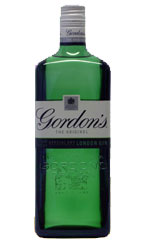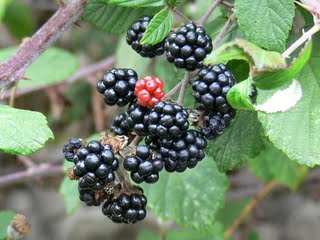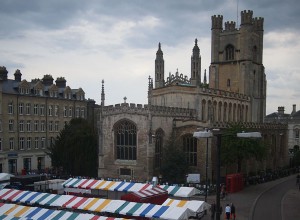
I live twelve miles outside Cambridge, far away enough that the only traffic is tractors and the occasional little girl on a horse. I’m in town a few times a week, but you’ll have noticed that I don’t have a lot to say about Cambridge on Gastronomy Domine. It’s not, to put it politely, a restaurant or bar destination. The city has what the papers call a “carbon-copy high street” problem: a survey last year found it the third worst town in the country for independent retailers and restaurants.
There’s a historical reason for this. Almost all of the property in the city centre is owned by the university colleges, and their monopoly on rents means that they can raise prices to a level that’s just not attainable for small businesses. As a result, the city centre has silted up with chains. It’s kind of depressing to reach the realisation that Jamie’s Italian is the best you’re going to manage without hopping on a bike or getting a cab. (You’re not going to be driving; the parking situation is horrible too.) The bar situation is, if anything, even worse – massive chains like B Bar, All Bar One and Revolution crammed to sweaty unpleasantness with student rugby clubs and belligerent sixth formers.
So when my buddy Douglas asked me to come with him to check out a new bar right on the Market Square, about as central as you can get, I was unenthusiastic. “It’ll prolly be horrid,” I texted back; “Central Cam, ffs. All the bars here = rubbish.”
I don’t think I’ve ever been so happy to be proved wrong in my life.
The 12a Club is on the upper floors of one of the only privately owned buildings in this part of town. The colleges and city council have the ability to impose some rather stringent licensing restrictions on new openings, and the restrictions they hit the owners of 12a with would have stopped most businesses dead in their tracks. The licence says the bar has to operate as a private members’ club. There can be no advertising; all new business has to come in by word of mouth. And 12a isn’t even allowed a sign outside the door. Add to this the fire department’s refusal to grant a hot food licence because of the age of the building, throw in some health and safety regulations about not being allowed to open the lovely Victorian sash windows, and you’ve got the sort of business that’s going to require some very creative thinking and a couple of air conditioning units to get underway.
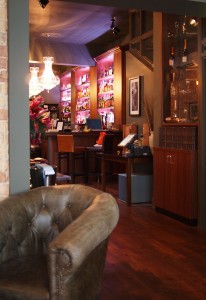
We were buzzed in through a little door between a touristy Italian restaurant and Marks and Spencer, climbed a narrow flight of stairs – and found ourselves in a 21st-century speakeasy. This is the direction the restrictive licensing has inspired the owners to take the place in: quietly masculine dark woods, raw brick and distressed leather, decoration recalling the 1920s, huge vases of lilies, and a soft vintage feel. The room pretty much instructs you to sit back and get comfortable with the aid of some snappy waitress service; the handsomely stocked bar provides all the extra encouragement you’ll need.
The champagne and wine list is, in keeping with the secretive nature of things in these parts, hidden in the back of an old book. A bookmark turns out, on closer inspection, to be a cocktail list: fantastic, grown-up, pre-prohibition cocktails of the sort we’ve almost forgotten about, all Aviations, Gimlets and Gourmets. This list is only a suggestion, meant to set the tone for your evening; even if you’re more the pink girly drink kind of person, they’ll happily knock up any cocktail you ask for. There are some people seriously educated in the art of the cocktail behind this bar, though, and it’s worth trusting their expertise and widening your horizons a little beyond strawberry daiquiris. There are six different kinds of bitters on the bar, floral syrups, a jar of house-made limoncello infusing away, and by far the most comprehensive and eclectic list of spirits that I’ve seen this side of London.
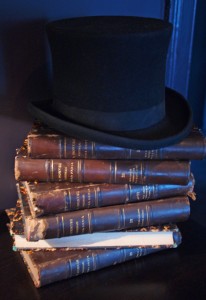
It was the little details that really caught me at 12a. The smell of wood polish in the main room; the ice in my drinks (not cubes, but hand-carved spheres, so your cocktail isn’t diluted by a fast melt); the exceptional drinks smarts of Mark, our host, who works front-of-house and performs alchemy behind the bar. He offered to “surprise me” with a cocktail – and he’d been listening so carefully to my waffling about food and drink over the preceding hour that he managed to get my taste down absolutely pat. An Old Fashioned with Gosling’s dark rum and shavings of dark chocolate, pepped up with one of those bottles of bitters (I wish I’d had the presence of mind to ask which one) which married the rum to the chocolate so smoothly it was almost enough to bring a tear to the eye. Hands down my favourite cocktail so far this year. A visit later in the week with a whisky-hound friend from New York saw Mark speak to him for a minute about his preferences and come back with a soft whisky finished in sauternes barrels which, he said, suited him so well it was as if Mark had read his mind. On our original visit, Douglas was presented with a Cambridge Butterfly: a work-in-progress cocktail that isn’t yet on the menu. Grapefruit, Butterfly absinthe, and god only knows what else. I hope it makes it onto the permanent list; I don’t think I’ve tasted a cocktail with such an interesting flavour profile before, swinging wildly in the mouth from citrus to liquorice to sugary sweetness to a floral intensity.
The 12a Club is pretty new, and they’re still tweaking the formula. There are ideas for a salumi room; for a less tightly-focussed wine list (at the moment most of what’s on offer is Italian wine, which can be a little impenetrable for some); for monthly tastings of wines, whiskies and rums; members’ events like a 1920s New Year’s Eve party; and quarterly charity nights. A change I’d really like to see is the addition of an espresso machine, but given that this is the only thing that occurred to me after a couple of weeks’ considered attempt to find something wrong with the place, I’d say that they have things pretty much down pat as it is.
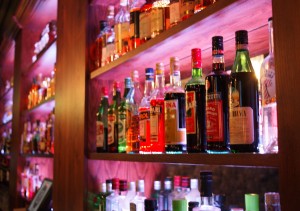
As of June 7, there’s a plan to open in the day so that members can have access to the two very private upstairs rooms, which have all the audio-visual equipment needed for business meetings. At the moment, these rooms are free to use on a first-come, first-served basis for members. (They’re also very pleasant for less serious get-togethers.) This sort of focus on business clients is a smart move; I can’t be the only person in these parts who has an occasional need for meeting rooms, and my experience elsewhere in the city has been both expensive and totally uninspiring. These rooms are much more up my street: beautiful, comfortable…and with waitress service and a champagne list.
The club has a bare-bones website with contact details and membership information. Head on over to have a look!

